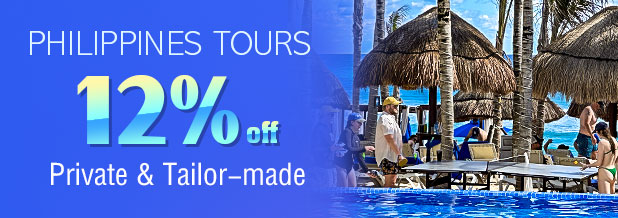- Top Things to Do
- Transportation
- Travel Tips
Philippines Travel Tips
Visa
Tourists from South America countries, all the EU member nations and ASEAN member states, Israel, Russia, America, South Korea, Hong Kong and Macau of China can enter the Philippines without visas, but their stay periods are different. Indian nationals who hold visas issued by the US, Japan, Australia, Canada, Schengen Area states, Singapore or the UK can enter the country without visas and stay for up to 14 days. Citizens of Afghanistan, Egypt, Cuba, Iran, Iraq, North Korea, Bangladesh, Belarus, Sudan, South Sudan, Ukraine, Pakistan and Palestine, Lebanon and Sri Lanka need to obtain visas ahead of travel.
Travel Expenditure
The consumption level in the Philippines is low. A meal in an ordinary restaurant costs about 80 Pesos. Tricycles and bancas are major modes of transportation for short distance travel, and the fare is low. In some popular tourist attractions, your expenditure will be a little higher. Credit cards can be used in the country, but you should ask if there is a commission charge. ATMs can be easily found, but usually you need to pay service charge when withdrawing cash. You should note that ATMs usually return your bank card before dispensing money.
Accommodation
From upscale hotels to homestay hostels, accommodations of different levels can cater to all tourists. In Manila, five star hotels cost about 70 to 120 dollars per night in peak tourist season, which are mostly located in Ermita district and costal region of Makati. The price of three star hotels in seaside resorts is about 20 to 30 dollars a night. The price of double room without private bathroom and air conditioning in homestay hostels or mid-priced hotels is about 5 dollars.
Food
Native dishes in the Philippines are mostly added with vinegar, garlic and other pungent seasonings. The Philippines is also famous for baked food and seafood, such as roast chicken, lechon, fresh shrimps and lobster. In addition, Philippine fruit is well-known, among which mango is the most famous. You will find delicacies made of mango at any restaurant in the country. You are recommended to taste Lechon, Adobo, Pancit and Halo-halo. Lechon is a main course at banquet, which is roast suckling pig seasoned with a sauce made from chicken liver, garlic, pepper and vinegar. The major ingredient of Adobo, a traditional Filipino dish, is pickled chicken or pork. Pancit are slightly sweet noodles fried with vegetable, shrimps and sausage.
Shopping
The Philippines is rich in products, which will absolutely satisfy your desire for shopping. The three most popular special products are dried mango, handicrafts and cigar. Guadalupe, CEBU, and 7D are three well-known brands of dried mango, and each brand has its own characteristics; therefore, you can buy them according to your taste. Handicrafts are mostly wood carvings which are genuine goods at a fair price. Wooden tableware is also exquisite, well worth buying. Philippine cigars are as famous as Cuba cigars and cigars produced in Luzon are the best in quality. SM Megamall and SM Mall of Asia are two large shopping malls in Manila, where you can shop, dine and enjoy entertainment.
Festivals
There are hundreds of festivals in the country, many of which are related to religion. Sinulog Festival, originated from Cebu Island, is celebrated across the country on the third Sunday of January. The celebration begins with a solemn party in Basilica of Santo Nino, the climax of which is Sinulog Parade on Sunday. The impressive parade is comprised of magnificently decorated floats, tattooed aborigines with their bodies glued with feathers, beautiful girls waving small flags and passionate dancers. Tourists can join the carnival procession and dance with the locals, experiencing the craze of the festival.
Phone Call and Internet
In the Philippines, you can buy prepaid SIM cards with the value of 100 or 200 Pesos in hotels, supermarkets and stores. International calls and domestic calls respectively cost 20 and 10 Pesos per minute. Internet access in the country is easy, because internet cafes can be easily found and most hotels, cafes and high-class restaurants serve free WIFI. In addition, you can connect to the Internet with cell phone, and the service is provided by Smart Telecom and Globe Telecom.
Power Supply
The voltage of the Philippines is 220 V with US two-hole or three-hole sockets, so you'd better bring a plug adaptor.
Do's and Don'ts
There are many taboos in the country; therefore you need to respect the local custom and pay attention to your behaviors. Here are some tips for you:
1. Take off your shoes before entering locals' homes.
2. Don't step on doorsill.
3. Don't shake hands with a person by your left hand.
4. Don't smoke in front of the elderly.
Useful Numbers
Calling code: +0063
Emergency Call: 117
Further Reading:
Things to Do in Philippines Philippines Transportation

